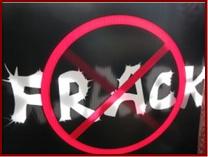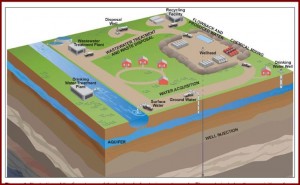
There are 34 states where oil and gas wells are being tapped through hydraulic fracturing with little oversight, according to environmentalists.
The U.S. Environmental Protection Agency or EPA said in a “progress report” that the outlines for a study on hydraulic fracking, aka fracturing, are now complete. EPA emphasized though that it has not drawn conclusions about the potential impacts of controversial hydraulic fracturing on drinking water resources, which will be made in the final study. (See long-term study on fracking)
Individual states currently regulate fracking, and the rules, as well as political interference from oil industry lobbyists, vary widely. The governor of Pennsylvania, Tom Corbett, for example has received almost $1 million from the natural gas industry. Corbett an extremist Republican is tough to take seriously in AutoInformed’s view, except for his ongoing and very real threat to the public welfare. He is now suing the NCAA because of its Penn State sanctions that the university accepted in the aftermath of the Jerry Sandusky child-molestation scandal and cover-ups of decades of child abuse. Corbett – facing reelection next year – thinks they are too “harsh.”

The five stages of the hydraulic fracturing water cycle include water acquisition for the hydraulic fracturing fluid, onsite mixing of chemicals with the water to create the hydraulic fracturing fluid, injection of the fluid under high pressures to fracture the oil-or gas-containing formation, recovery of flowback and produced water (hydraulic fracturing wastewater) and after the injection is complete, and treatment and/or disposal of the wastewater.
According to a Congressional Research Service report published last April, “Hydraulic Fracturing and Safe Drinking Water Act Issues,” numerous states are reviewing or have revised their oil and gas rules to address the increased use of fracking because of the toxic heavy metals used as part of the process and the number of well leaking into ground water supplies.
The U.S. Department of Labor’s Occupational Safety and Health Administration and the National Institute for Occupational Safety and Health last June issued a ‘hazard alert’ to employers conducting hydraulic fracking operations. OSHA wants steps taken to protect workers from silica exposure as part of the controversial technique used to extract oil and natural gas. The hazard alert follows a study by NIOSH and industry that identified overexposure to silica as a health hazard to workers during hydraulic fracking.
Large quantities of silica sand are used during hydraulic fracturing, but NIOSH unbelievably only started collecting data in January of 2010 on silica exposure at hydraulic fracturing operations. Under the Occupational Safety and Health Act of 1970, employers are responsible for providing safe and healthful workplaces for their employees. OSHA’s appears to be lethargic or asleep – to be kind – in looking at fracking.
The U.S. Environmental Protection Agency last year released draft regulations covering the use of diesel fuels injected underground during hydraulic fracking to extract natural gas and oil. EPA said it was attempting to clarify how companies can comply with a law passed by Congress in 2005 regulating diesel fuel, if it is used as a fracking fluid. (See EPA Regulates Diesel Fuel Injected Underground for Fracking)
The law is controversial because in pay-to-play Washington dominated by big money, Congress exempted most fracking fluids from the regulation of liquids injected into the ground as required under the Safe Drinking Water Act. In environmental circles, this became known as the Halliburton loophole. Then U.S. vice-president Richard Cheney ran Halliburton – the biggest fracking services company in the country if not the world – before he was elected, of course.
Results of the EPA study of fracking, which Congress requested EPA to complete, are expected to be released in draft form for public and peer review late in 2014, no doubt after the Congressional elections.
Previously both the President Obama and EPA under now departing Administrator Lisa Jackson, have said that natural gas has a central role to play in our energy future. Supporters, with some justification, say this domestic fuel source has extensive economic, energy security and environmental benefits. This leads critics to wonder, though, just how objective the study EPA study will be given ongoing drinking water problems caused by pollution from fracking.
EPA counters its study has been designated a “Highly Influential Scientific Assessment,” meaning it will receive the highest level of review in accordance with EPA’s peer review handbook before it is finalized. The 2014 draft report will synthesize the results from the ongoing projects, together with the scientific literature to answer the study’s main research questions.
EPA’s Science Advisory Board (SAB) is forming a panel of independent experts, which will review and provide their individual input on the ongoing study to EPA. The SAB will provide an opportunity for the public to offer comments for consideration by the individual panel members.
EPA continues to request data and information from the public and stakeholders and has put out a formal request for information which can be accessed through the federal register at: https://www.federalregister.gov/articles/2012/11/09/2012-27452/request-for-information-to-inform-hydraulic-fracturing-research-related-to-drinking-water-resources

